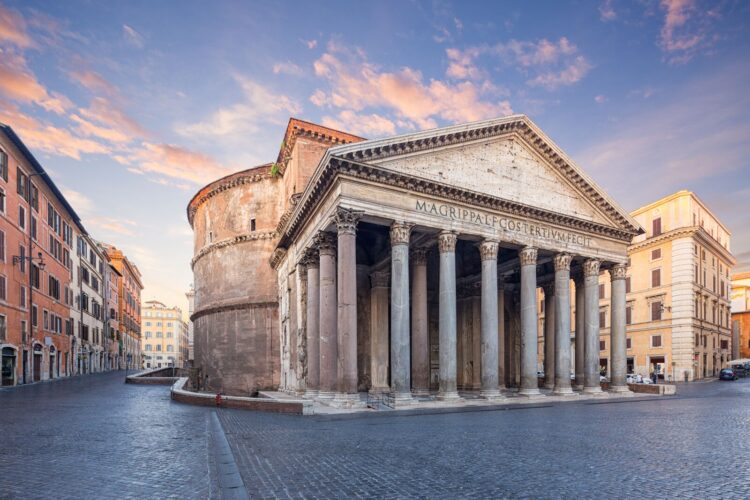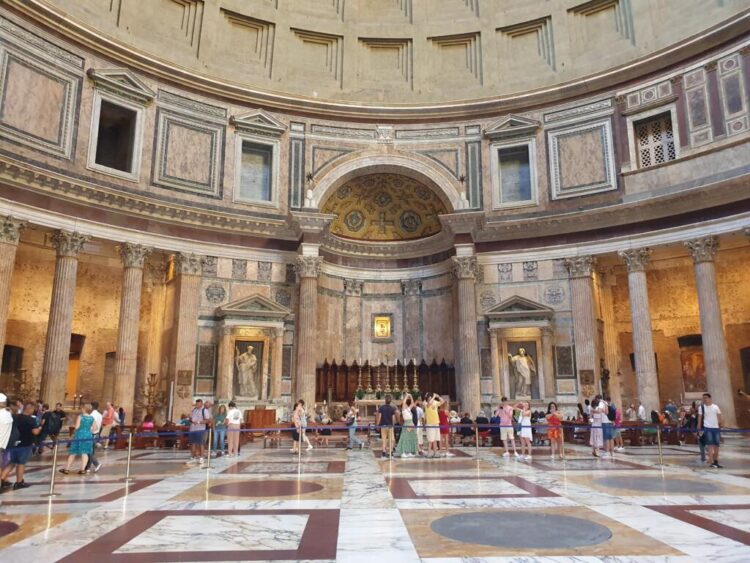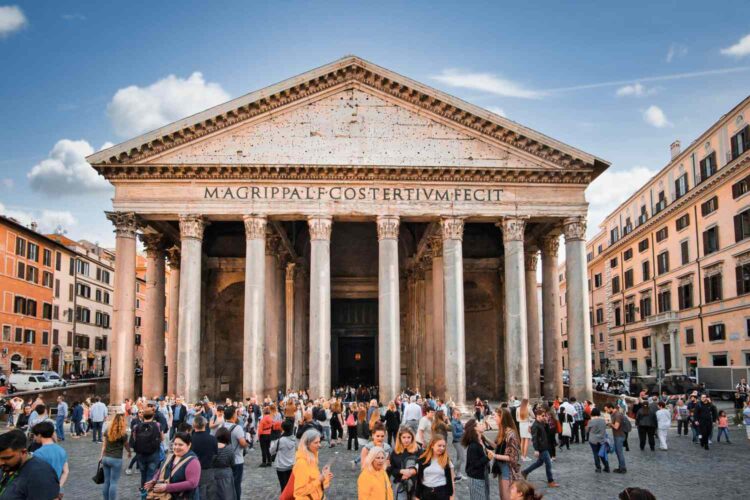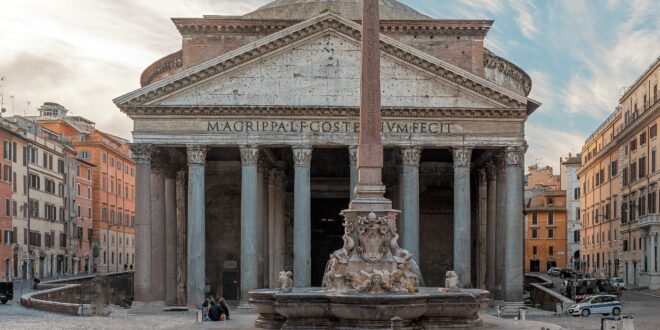One of the most remarkable and enduring monuments of Ancient Rome is the Pantheon. Located in the heart of Rome, this architectural marvel has stood for nearly two millennia as a testament to the ingenuity and grandeur of Roman engineering.
With its colossal dome and intricate classical detailing, the Pantheon continues to captivate visitors from around the world. This iconic structure, originally built as a temple to all the gods of Ancient Rome, has undergone numerous changes and has played various roles throughout history. This article delves into the architectural elements, historical significance, and enduring legacy of the Pantheon.
Historical Background
Commissioned by Marcus Agrippa during the reign of Augustus, the Pantheon was initially constructed between 27 BC and 25 BC. However, the original structure was destroyed by a fire in AD 80. The Pantheon we see today was rebuilt under Emperor Hadrian around 126 AD, and although the facade still bears the inscription attributing it to Agrippa, Hadrian’s version is considerably different and more grandiose.
The term “Pantheon” is derived from the Ancient Greek words “pan,” meaning all, and “theion,” meaning divine. Originally, the building was intended to honor all the Roman gods. Over time, its purpose changed. In the 7th century, it was consecrated as a Christian church, which significantly contributed to its preservation.

Architectural Ingenuity
One of the Pantheon’s most striking features is its massive dome, which remains the world’s largest unreinforced concrete dome. The interior diameter and the height of the dome are identical, measuring approximately 43.3 meters (142 feet), symbolizing the harmony of the celestial sphere.
The Oculus, an opening at the dome’s apex measuring 8.9 meters (29 feet) across, is the only source of natural light inside the Pantheon. The sunlight entering through the Oculus moves around the interior, creating a captivating effect. The dome’s coffered design, with its indented square panels, not only adds aesthetic appeal but also reduces the weight of the massive structure.
The Pantheon’s portico is another feature that warrants attention. The massive granite Corinthian columns, each 11.8 meters (39 feet) tall, were transported from Egypt and support the triangular pediment. The facade, reminiscent of Greek temples, contrasts with the innovative Roman engineering of the dome.
The materials used in the construction of the Pantheon were meticulously chosen. The Romans employed a combination of lighter materials near the dome’s top and heavier ones at the base, ensuring the structure’s stability.
Role Through the Centuries
Over the centuries, the Pantheon has played a significant role in cultural and religious life. As it transitioned from a Roman temple to a Christian church, it hosted religious ceremonies and services. In the Renaissance era, it served as an inspiration for architects who marveled at its grandeur and perfection.
The Pantheon is also a mausoleum. Among those interred within its walls are the Italian kings Vittorio Emanuele II and Umberto I, as well as the renowned painter and architect Raphael.

Enduring Legacy
The Pantheon’s legacy is far-reaching. Its architectural innovations, particularly the dome, influenced numerous structures, including the Florence Cathedral and the United States Capitol. Moreover, it stands as a testament to the prowess of Roman engineering.
The Pantheon’s preservation is exceptional, and walking into the structure is akin to stepping back in time. It remains an active place of worship and is one of the most visited historical sites in the world. In a city rich with history, the Pantheon stands out as a monument that has not only withstood the test of time but also continues to be a vital part of Rome’s cultural fabric. Its architectural ingenuity, steeped in both symbolism and functionality, is a reminder of the advanced engineering and artistic skills of the ancient Romans.
Contemporary Relevance
In the modern era, the Pantheon continues to draw the attention of architects, historians, and tourists alike. As an exemplary feat of engineering, it is a focus of study for engineering and architecture students. Additionally, it plays a role in contemporary culture, often serving as a backdrop in films and literature.

Preservation and Future
As the Pantheon approaches its two-thousandth anniversary, efforts in preservation and conservation are paramount to safeguard this irreplaceable treasure. The Italian government and international bodies are actively involved in maintaining the structure. In an ever-changing world, the Pantheon stands as a reminder of the past’s grandeur and as an inspiration for innovation in architecture and engineering. For skip-the-line tickets and tours please visit Pantheon-Tickets.
The Pantheon is more than an architectural marvel; it is a symbol of the enduring legacy of Ancient Rome. Its monumental dome, innovative construction, and centuries-long service to the city of Rome make it an invaluable heritage site. The Pantheon will undoubtedly continue to inspire and captivate future generations.
 Hi Boox Popular Magazine 2024
Hi Boox Popular Magazine 2024



